
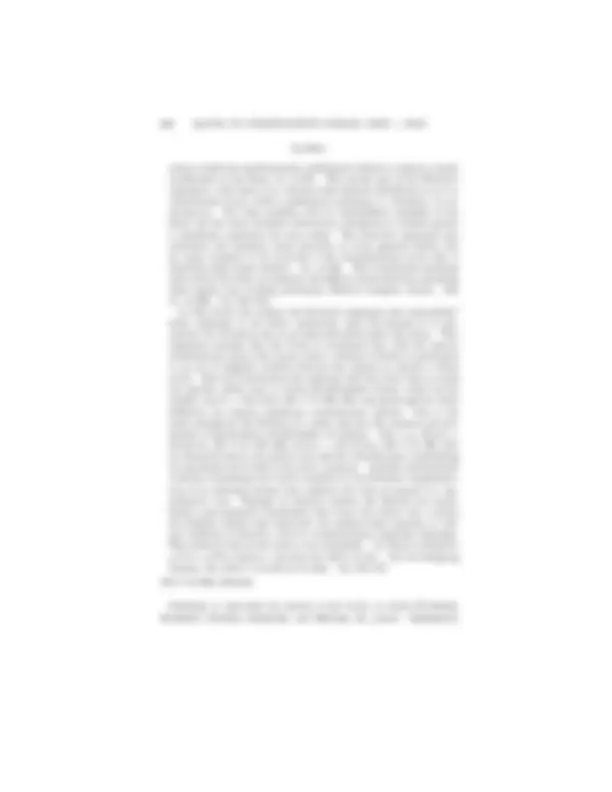
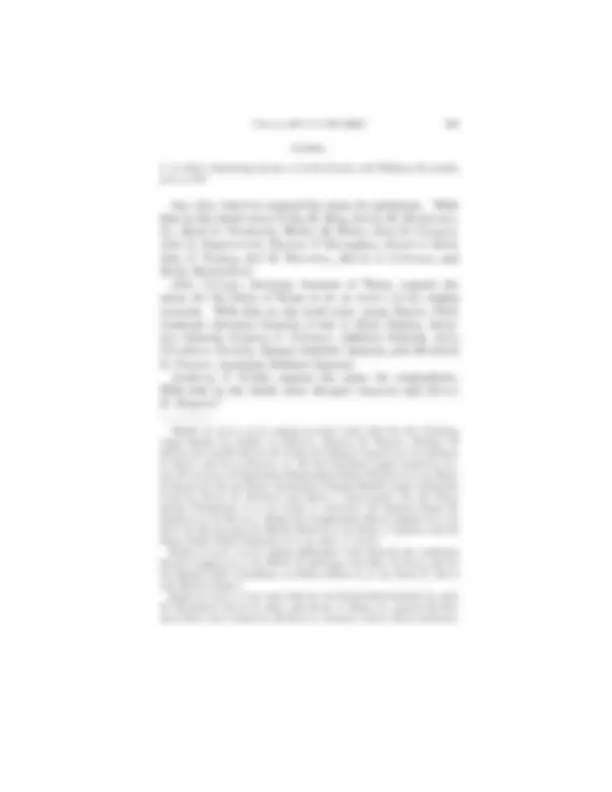
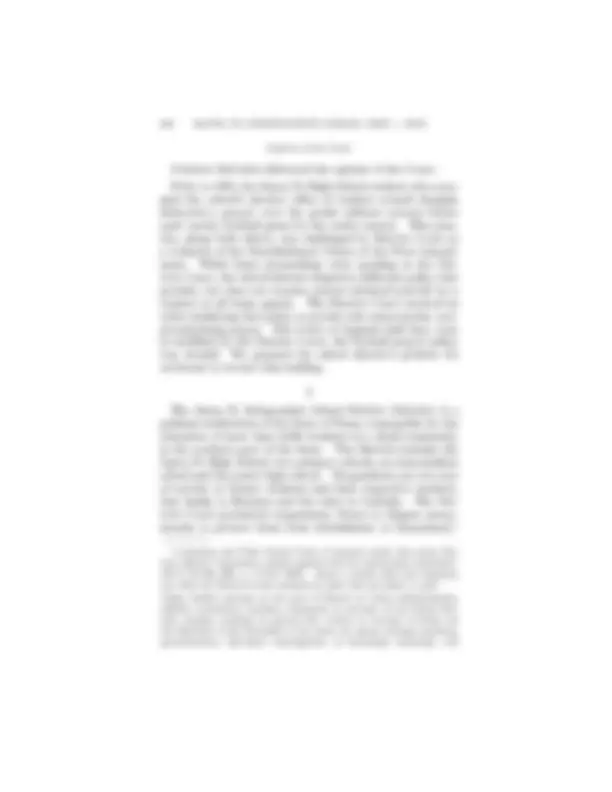
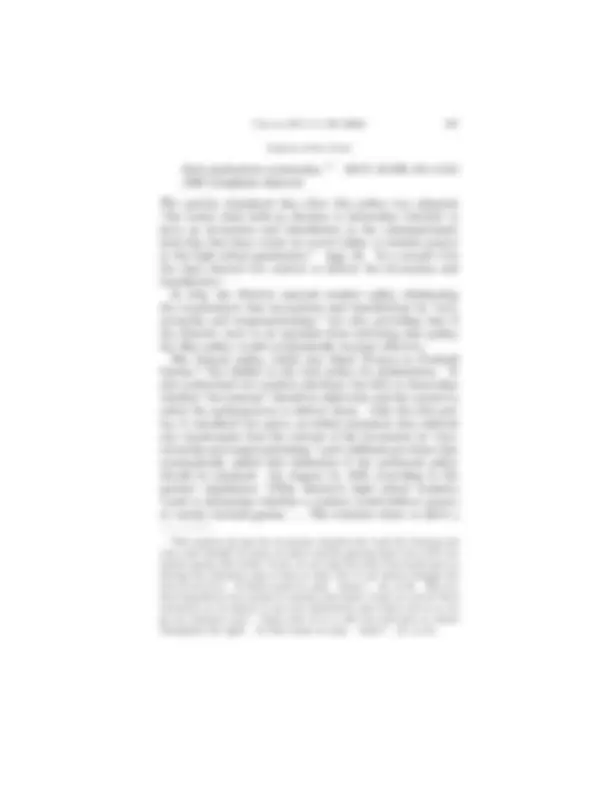
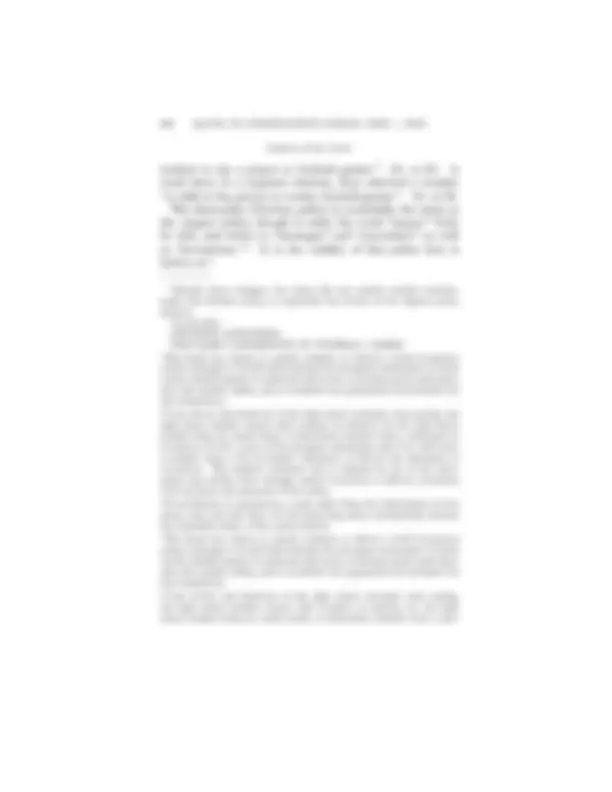
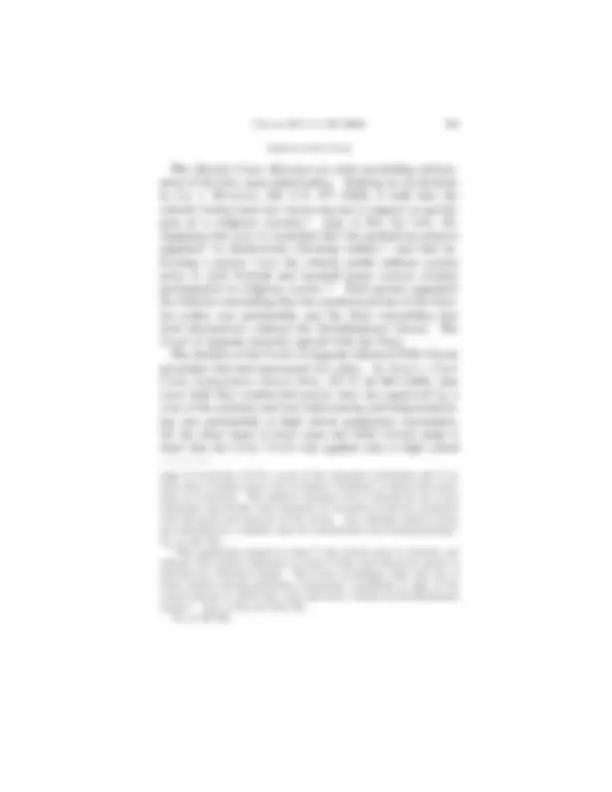
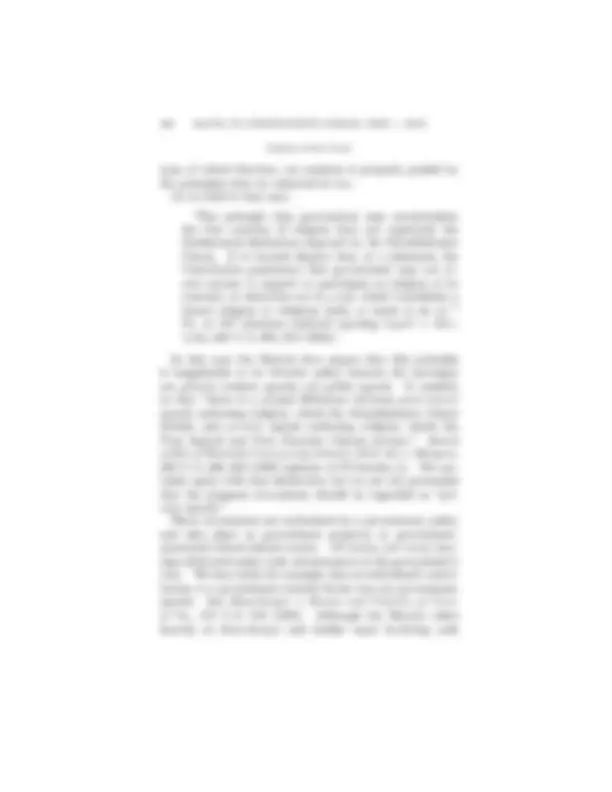
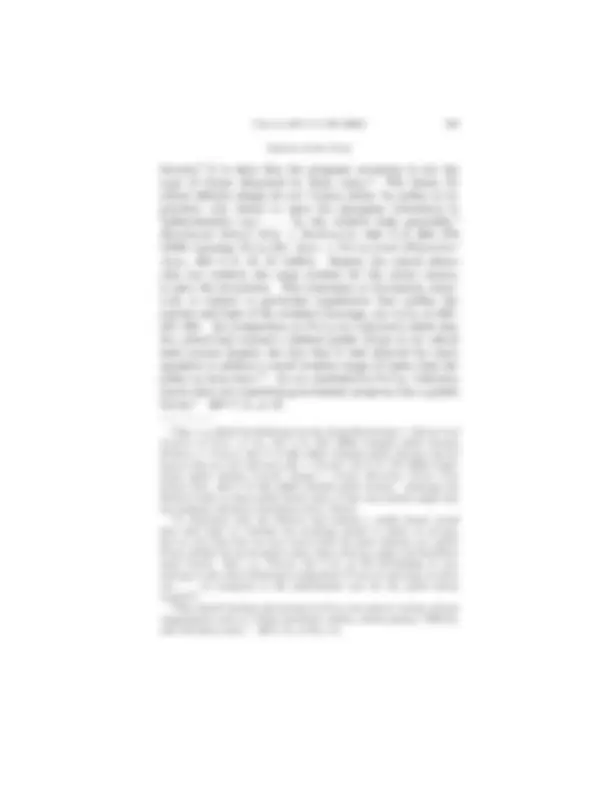
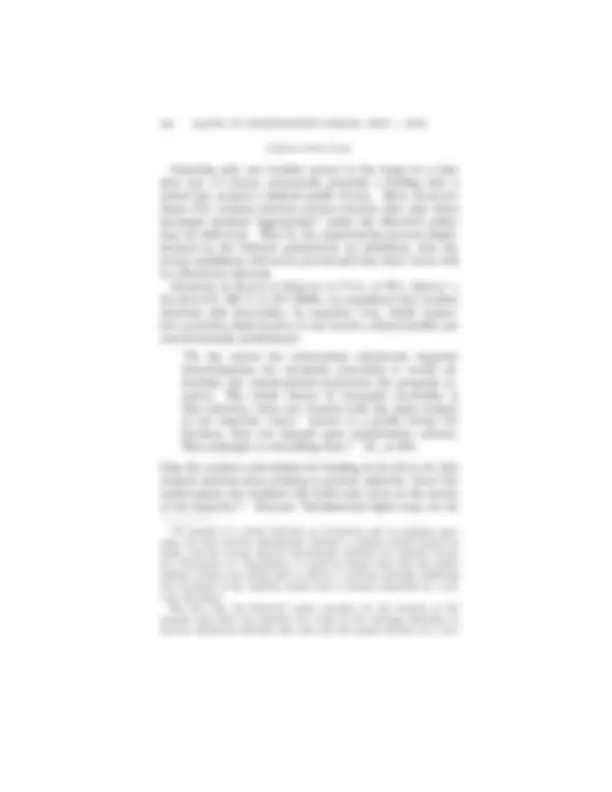
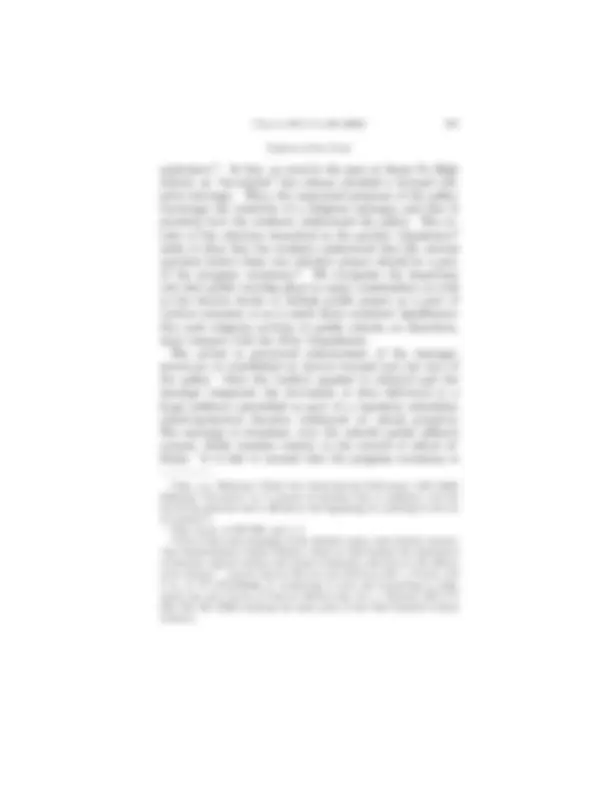
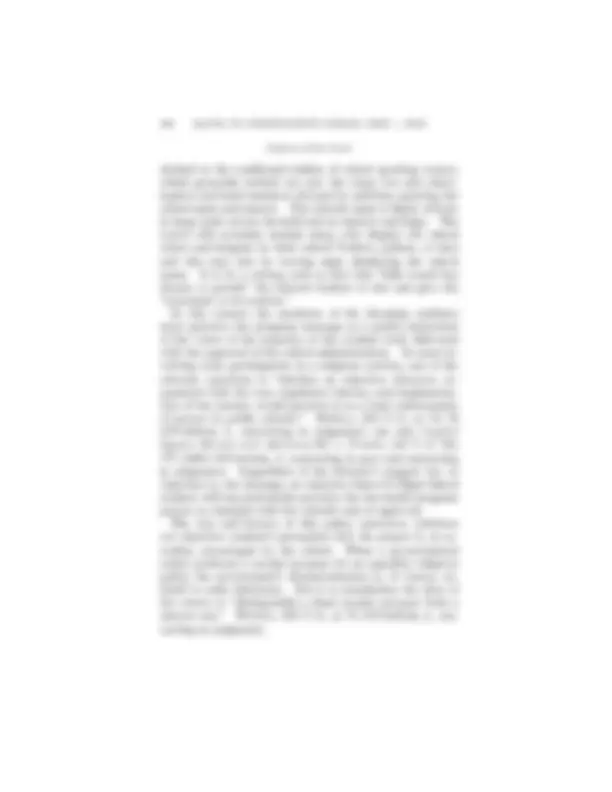
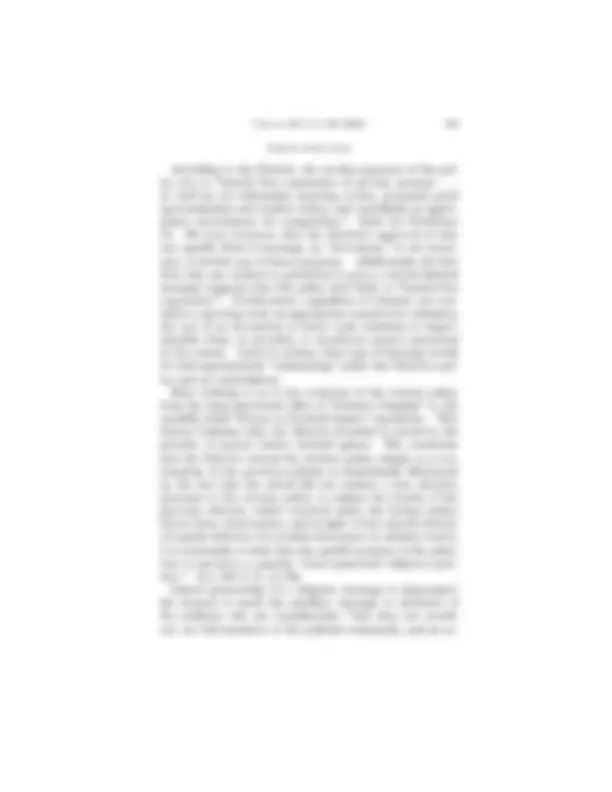
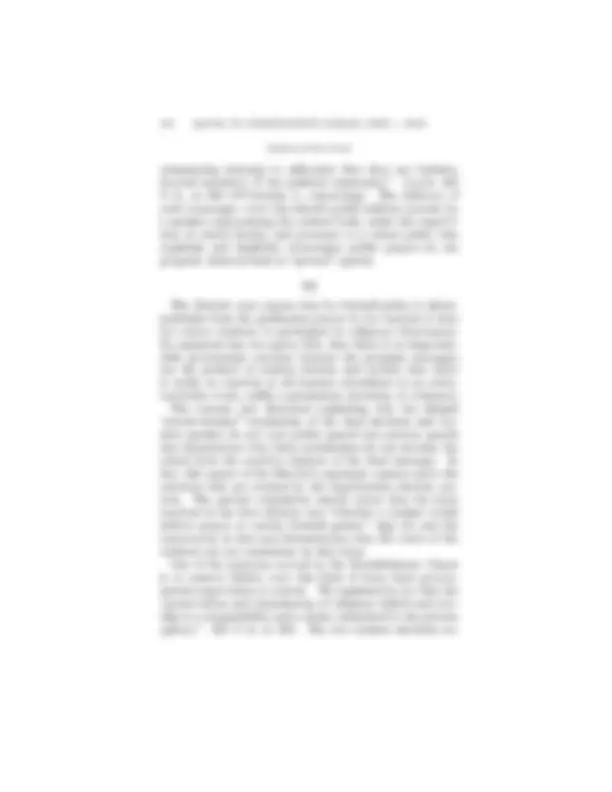
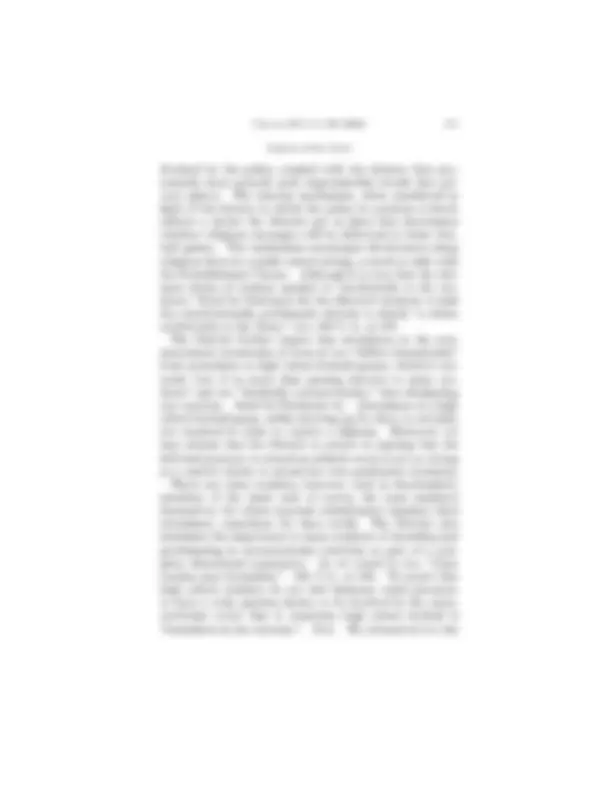
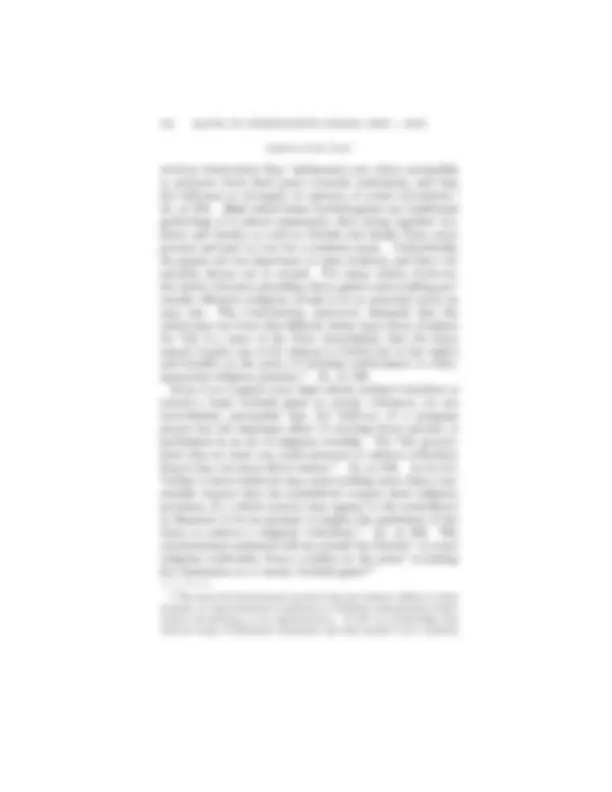
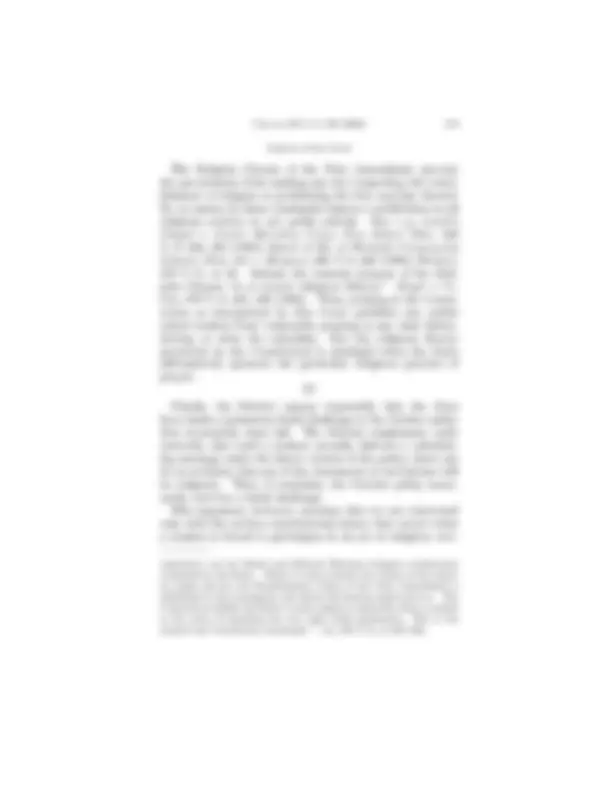
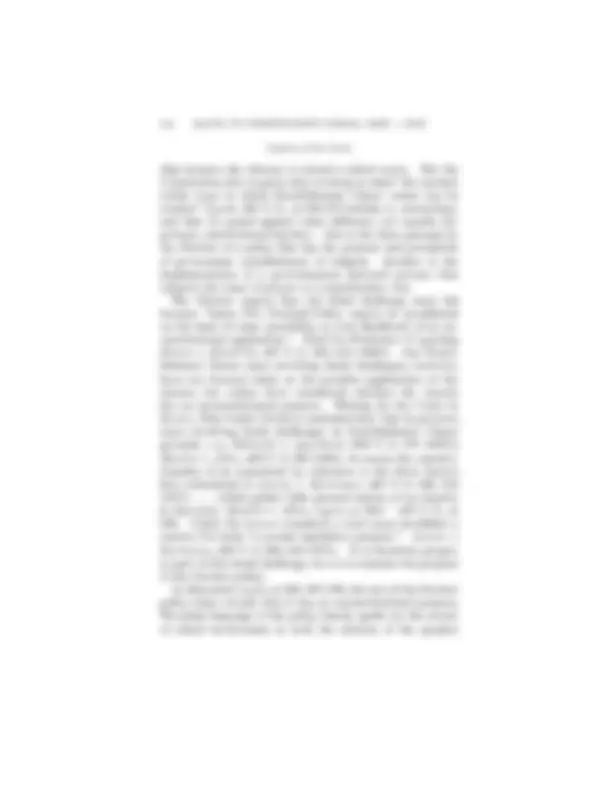
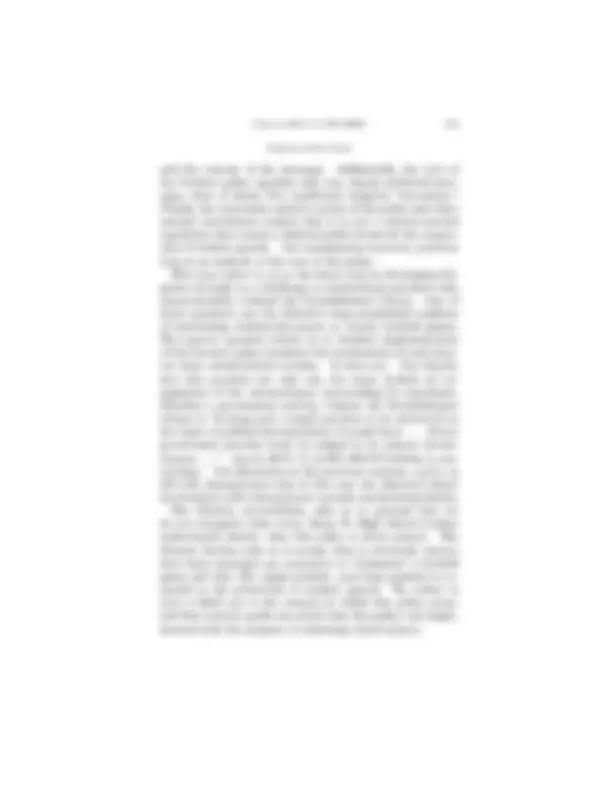
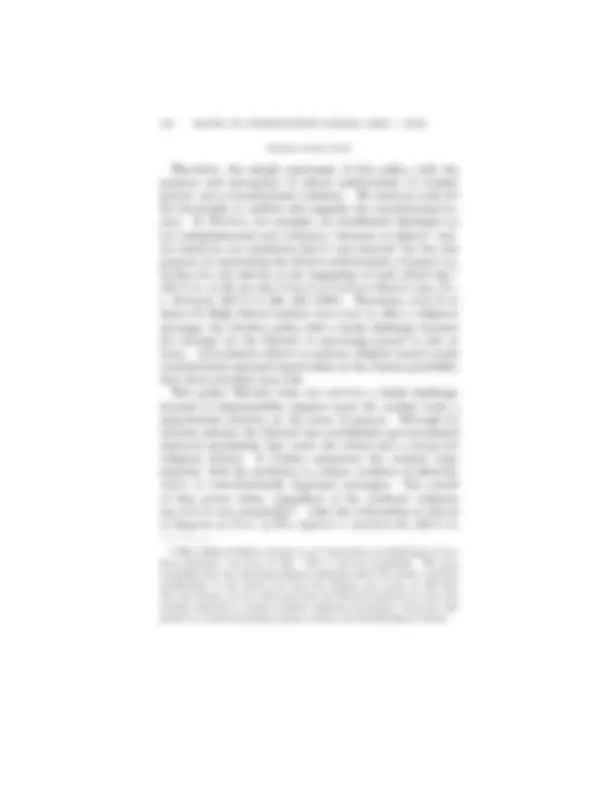
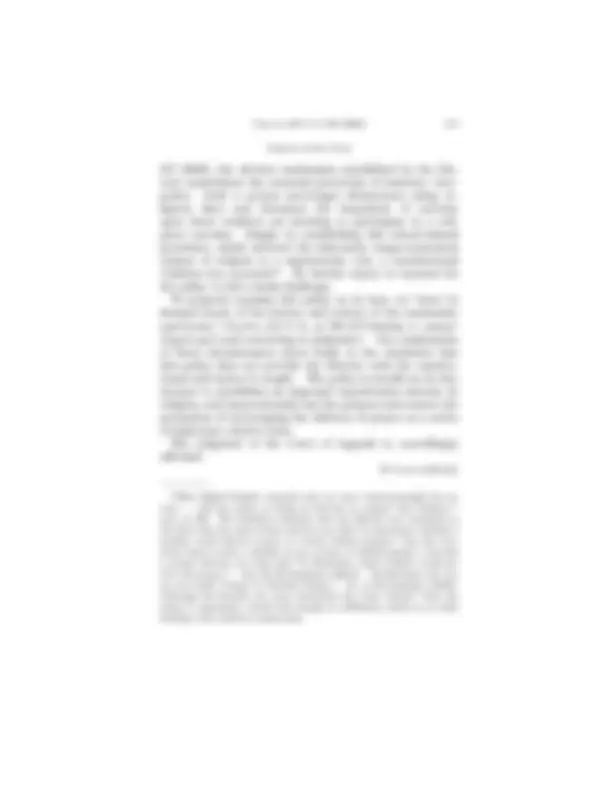
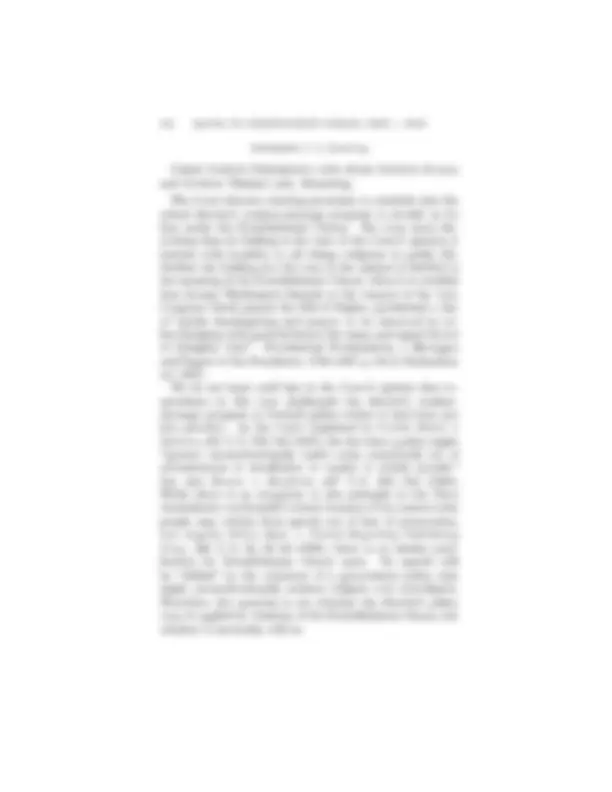
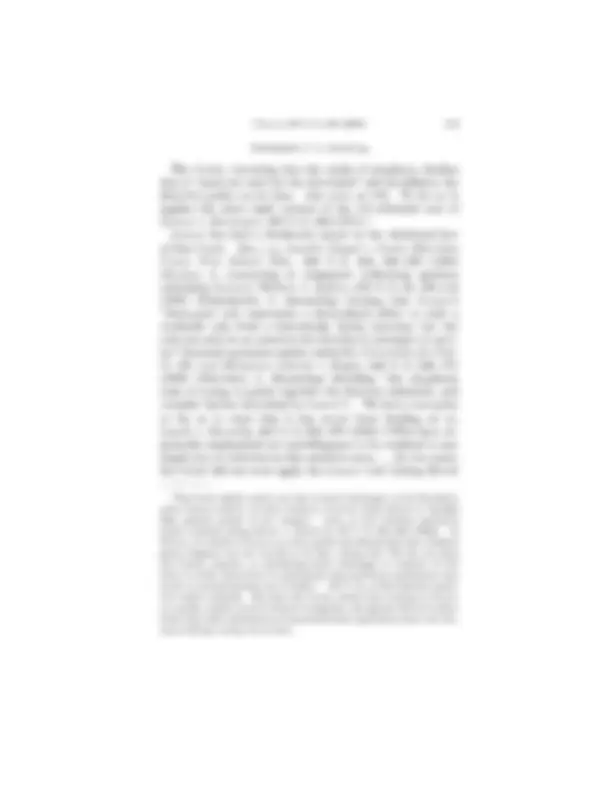
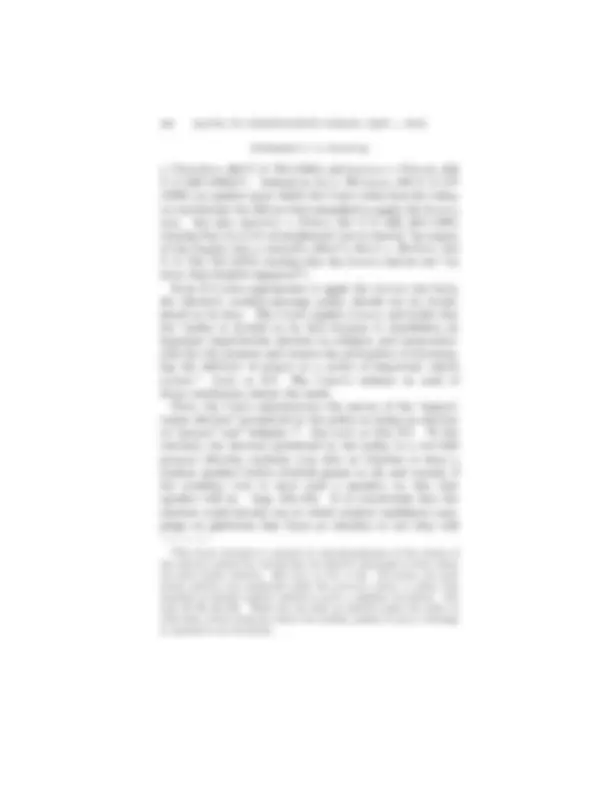
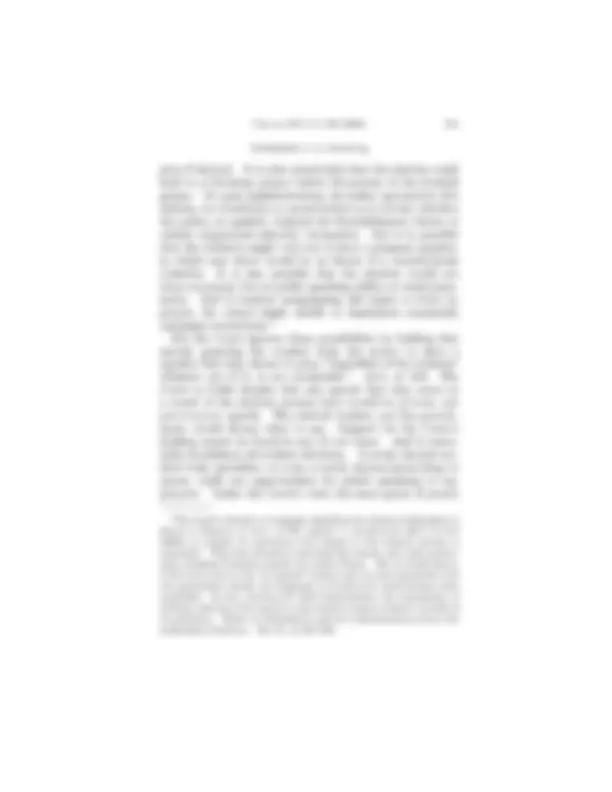
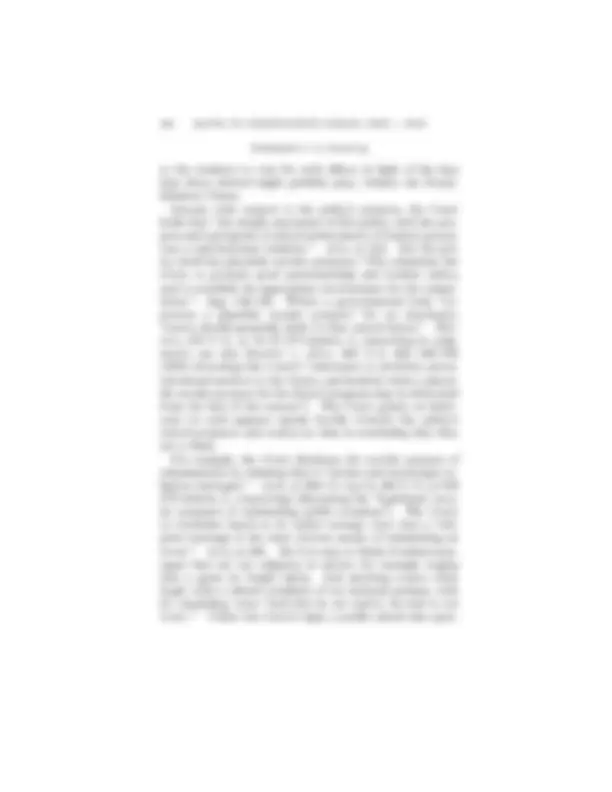
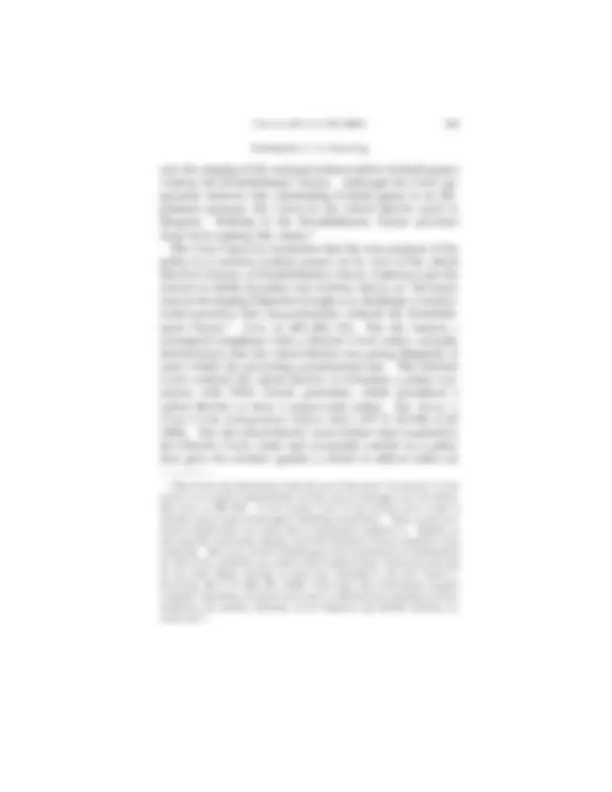
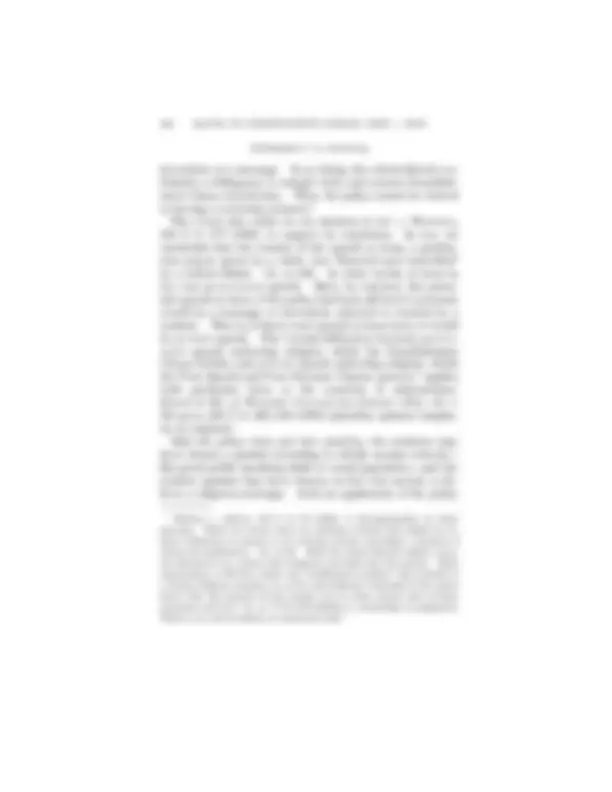
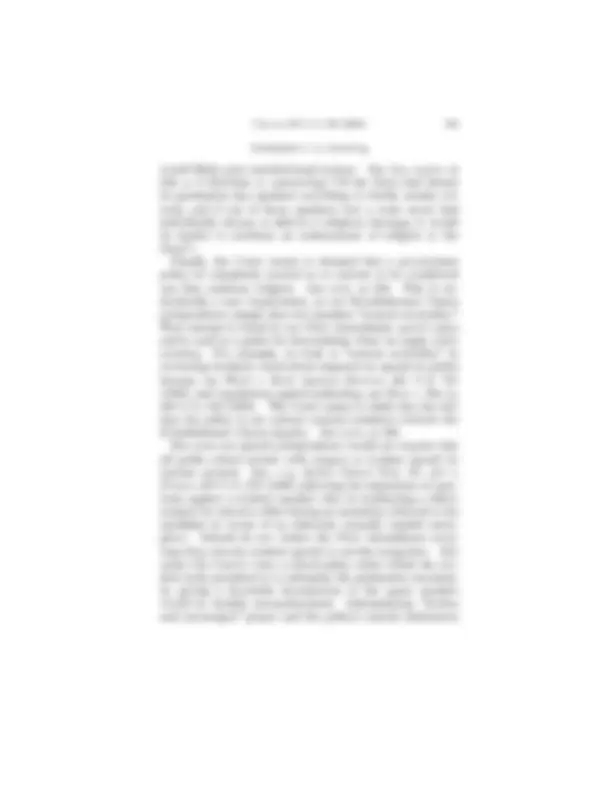
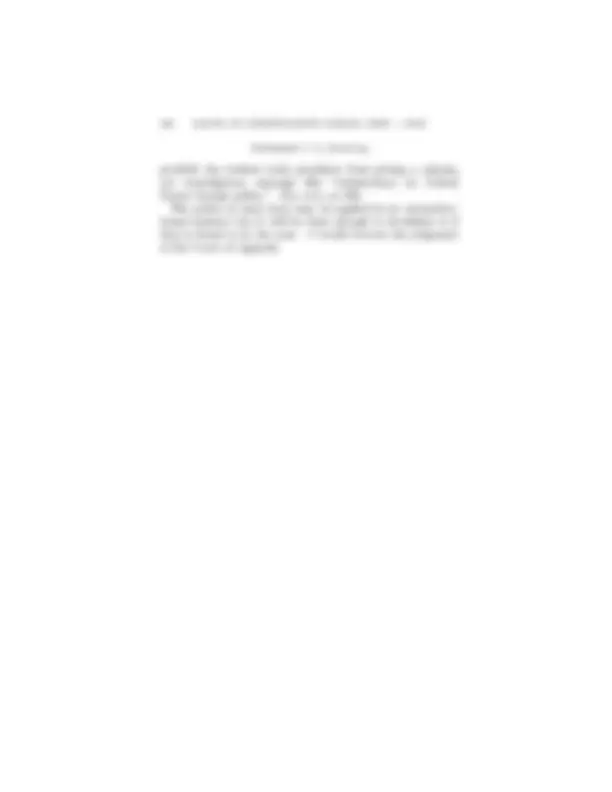


Study with the several resources on Docsity

Earn points by helping other students or get them with a premium plan


Prepare for your exams
Study with the several resources on Docsity

Earn points to download
Earn points by helping other students or get them with a premium plan
Community
Ask the community for help and clear up your study doubts
Discover the best universities in your country according to Docsity users
Free resources
Download our free guides on studying techniques, anxiety management strategies, and thesis advice from Docsity tutors
While the suit was pending, petitioner school district (District) adopted a different policy, which authorizes two student elections, the first to determine ...
Typology: Lecture notes
1 / 37

This page cannot be seen from the preview
Don't miss anything!






























290 OCTOBER TERM, 1999
Syllabus
SANTA FE INDEPENDENT SCHOOL DISTRICT v. DOE, individually and as next friend for her minor children, et al.
certiorari to the united states court of appeals for the fifth circuit No. 99–62. Argued March 29, 2000—Decided June 19, 2000
Prior to 1995, a student elected as Santa Fe High School’s student council chaplain delivered a prayer over the public address system before each home varsity football game. Respondents, Mormon and Catholic stu- dents or alumni and their mothers, filed a suit challenging this practice and others under the Establishment Clause of the First Amendment. While the suit was pending, petitioner school district (District) adopted a different policy, which authorizes two student elections, the first to determine whether “invocations” should be delivered at games, and the second to select the spokesperson to deliver them. After the students held elections authorizing such prayers and selecting a spokesperson, the District Court entered an order modifying the policy to permit only nonsectarian, nonproselytizing prayer. The Fifth Circuit held that, even as modified by the District Court, the football prayer policy was invalid. Held: The District’s policy permitting student-led, student-initiated prayer at football games violates the Establishment Clause. Pp. 301–317. (a) The Court’s analysis is guided by the principles endorsed in Lee v. Weisman, 505 U. S. 577. There, in concluding that a prayer delivered by a rabbi at a graduation ceremony violated the Establishment Clause, the Court held that, at a minimum, the Constitution guarantees that government may not coerce anyone to support or participate in re- ligion or its exercise, or otherwise act in a way that establishes a state religion or religious faith, or tends to do so, id., at 587. The District argues unpersuasively that these principles are inapplicable because the policy’s messages are private student speech, not public speech. The delivery of a message such as the invocation here—on school prop- erty, at school-sponsored events, over the school’s public address sys- tem, by a speaker representing the student body, under the super- vision of school faculty, and pursuant to a school policy that explicitly and implicitly encourages public prayer—is not properly characterized as “private” speech. Although the District relies heavily on this Court’s cases addressing public forums, e. g., Rosenberger v. Rector and Visitors of Univ. of Va., 515 U. S. 819, it is clear that the District’s
Cite as: 530 U. S. 290 (2000) 291
Syllabus
pregame ceremony is not the type of forum discussed in such cases. The District simply does not evince an intent to open its ceremony to indiscriminate use by the student body generally, see, e. g., Hazelwood School Dist. v. Kuhlmeier, 484 U. S. 260, 270, but, rather, allows only one student, the same student for the entire season, to give the invoca- tion, which is subject to particular regulations that confine the content and topic of the student’s message. The majoritarian process imple- mented by the District guarantees, by definition, that minority candi- dates will never prevail and that their views will be effectively silenced. See Board of Regents of Univ. of Wis. System v. Southworth, 529 U. S. 217, 235. Moreover, the District has failed to divorce itself from the invocations’ religious content. The policy involves both perceived and actual endorsement of religion, see Lee, 505 U. S., at 590, declaring that the student elections take place because the District “has chosen to permit” student-delivered invocations, that the invocation “shall” be conducted “by the high school student council” “[u]pon advice and direc- tion of the high school principal,” and that it must be consistent with the policy’s goals, which include “solemniz[ing] the event.” A religious message is the most obvious method of solemnizing an event. Indeed, the only type of message expressly endorsed in the policy is an “invoca- tion,” a term which primarily describes an appeal for divine assistance and, as used in the past at Santa Fe High School, has always entailed a focused religious message. A conclusion that the message is not “pri- vate speech” is also established by factors beyond the policy’s text, including the official setting in which the invocation is delivered, see, e. g., Wallace v. Jaffree, 472 U. S. 38, 73, 76, by the policy’s sham secular purposes, see id., at 75, and by its history, which indicates that the Dis- trict intended to preserve its long-sanctioned practice of prayer before football games, see Lee, 505 U. S., at 596. Pp. 301–310. (b) The Court rejects the District’s argument that its policy is dis- tinguishable from the graduation prayer in Lee because it does not coerce students to participate in religious observances. The first part of this argument—that there is no impermissible government coercion because the pregame messages are the product of student choices—fails for the reasons discussed above explaining why the mechanism of the dual elections and student speaker do not turn public speech into pri- vate speech. The issue resolved in the first election was whether a student would deliver prayer at varsity football games, and the contro- versy in this case demonstrates that the students’ views are not unani- mous on that issue. One of the Establishment Clause’s purposes is to remove debate over this kind of issue from governmental supervision or control. See Lee, 505 U. S., at 589. Although the ultimate choice of student speaker is attributable to the students, the District’s de-
Cite as: 530 U. S. 290 (2000) 293
Syllabus
C. J., filed a dissenting opinion, in which Scalia and Thomas, JJ., joined, post, p. 318.
Jay Alan Sekulow argued the cause for petitioner. With him on the briefs were Colby M. May, James M. Henderson, Sr., Mark N. Troobnick, Walter M. Weber, Paul D. Clement, John G. Stepanovich, Thomas P. Monaghan, Stuart J. Roth, John P. Tuskey, Joel H. Thornton, David A. Cortman, and Kelly Shackelford. John Cornyn, Attorney General of Texas, argued the cause for the State of Texas et al. as amici curiae urging reversal. With him on the brief were Andy Taylor, First Assistant Attorney General, Linda S. Eads, Deputy Attor- ney General, Gregory S. Coleman, Solicitor General, Julie Caruthers Parsley, Deputy Solicitor General, and Meredith B. Parenti, Assistant Solicitor General. Anthony P. Griffin argued the cause for respondents. With him on the briefs were Douglas Laycock and Steven R. Shapiro. *
*Briefs of amici curiae urging reversal were filed for the Christian Legal Society by Steffen N. Johnson, Stephen M. Shapiro, Michael W. McConnell, and Kimberlee W. Colby; for Liberty Counsel et al. by Mathew D. Staver and Jerry Falwell, Jr.; for the Northstar Legal Center by Jor- dan W. Lorence; for Spearman Independent School District et al. by Roger D. Hepworth; for the Texas Association of School Boards Legal Assistance Fund by David M. Feldman and Myra C. Schexnayder; for the Texas Justice Foundation et al. by Linda L. Schlueter; for Senator James M. Inhofe et al. by Barry C. Hodge; for Congressman Steve Largent et al. by Brett M. Kavanaugh; for Marian Ward et al. by Kelly J. Coghlan; and for Texas Public School Students et al. by John L. Carter. Briefs of amici curiae urging affirmance were filed for the American Jewish Congress et al. by Walter E. Dellinger and Marc D. Stern; and for the Baptist Joint Committee on Public Affairs et al. by Derek H. Davis and Melissa Rogers. Briefs of amici curiae were filed for the Rutherford Institute by John W. Whitehead, Steven H. Aden, and James A. Hayes, Jr.; and for the Stu- dent Press Law Center by Richard A. Simpson and S. Mark Goodman.
294 SANTA FE INDEPENDENT SCHOOL DIST. v. DOE
Opinion of the Court
Justice Stevens delivered the opinion of the Court. Prior to 1995, the Santa Fe High School student who occu- pied the school’s elective office of student council chaplain delivered a prayer over the public address system before each varsity football game for the entire season. This prac- tice, along with others, was challenged in District Court as a violation of the Establishment Clause of the First Amend- ment. While these proceedings were pending in the Dis- trict Court, the school district adopted a different policy that permits, but does not require, prayer initiated and led by a student at all home games. The District Court entered an order modifying that policy to permit only nonsectarian, non- proselytizing prayer. The Court of Appeals held that, even as modified by the District Court, the football prayer policy was invalid. We granted the school district’s petition for certiorari to review that holding.
I The Santa Fe Independent School District (District) is a political subdivision of the State of Texas, responsible for the education of more than 4,000 students in a small community in the southern part of the State. The District includes the Santa Fe High School, two primary schools, an intermediate school and the junior high school. Respondents are two sets of current or former students and their respective mothers. One family is Mormon and the other is Catholic. The Dis- trict Court permitted respondents (Does) to litigate anony- mously to protect them from intimidation or harassment.^1
(^1) A decision, the Fifth Circuit Court of Appeals noted, that many Dis- trict officials “apparently neither agreed with nor particularly respected.” 168 F. 3d 806, 809, n. 1 (CA5 1999). About a month after the complaint was filed, the District Court entered an order that provided, in part: “[A]ny further attempt on the part of District or school administration, officials, counsellors, teachers, employees or servants of the School Dis- trict, parents, students or anyone else, overtly or covertly to ferret out the identities of the Plaintiffs in this cause, by means of bogus petitions, questionnaires, individual interrogation, or downright ‘snooping’, will
296 SANTA FE INDEPENDENT SCHOOL DIST. v. DOE
Opinion of the Court
spect to the impending graduation, the order provided that “non-denominational prayer” consisting of “an invocation and/or benediction” could be presented by a senior student or students selected by members of the graduating class. The text of the prayer was to be determined by the students, without scrutiny or preapproval by school officials. Refer- ences to particular religious figures “such as Mohammed, Jesus, Buddha, or the like” would be permitted “as long as the general thrust of the prayer is non-proselytizing.” App. 32. In response to that portion of the order, the District adopted a series of policies over several months dealing with prayer at school functions. The policies enacted in May and July for graduation ceremonies provided the format for the August and October policies for football games. The May policy provided:
“ ‘The board has chosen to permit the graduating senior class, with the advice and counsel of the senior class principal or designee, to elect by secret ballot to choose whether an invocation and benediction shall be part of the graduation exercise. If so chosen the class shall elect by secret ballot, from a list of student volunteers, students to deliver nonsectarian, nonproselytizing invo- cations and benedictions for the purpose of solemnizing
“manifest First Amendment infractions of teachers, counsellors, or other District or school officials or personnel, such as ridiculing, berating or holding up for inappropriate scrutiny or examination the beliefs of any individual students. Similarly, the School District will establish or clarify existing procedures for excluding overt or covert sectarian and prose- lytizing religious teaching, such as the use of blatantly denominational religious terms in spelling lessons, denominational religious songs and poems in English or choir classes, denominational religious stories and parables in grammar lessons and the like, while at the same time allow- ing for frank and open discussion of moral, religious, and societal views and beliefs, which are non-denominational and non-judgmental.” Id., at 34.
Cite as: 530 U. S. 290 (2000) 297
Opinion of the Court
their graduation ceremonies.’ ” 168 F. 3d 806, 811 (CA
The parties stipulated that after this policy was adopted, “the senior class held an election to determine whether to have an invocation and benediction at the commencement [and that the] class voted, by secret ballot, to include prayer at the high school graduation.” App. 52. In a second vote the class elected two seniors to deliver the invocation and benediction.^4 In July, the District enacted another policy eliminating the requirement that invocations and benedictions be “non- sectarian and nonproselytising,” but also providing that if the District were to be enjoined from enforcing that policy, the May policy would automatically become effective. The August policy, which was titled “Prayer at Football Games,” was similar to the July policy for graduations. It also authorized two student elections, the first to determine whether “invocations” should be delivered, and the second to select the spokesperson to deliver them. Like the July pol- icy, it contained two parts, an initial statement that omitted any requirement that the content of the invocation be “non- sectarian and nonproselytising,” and a fallback provision that automatically added that limitation if the preferred policy should be enjoined. On August 31, 1995, according to the parties’ stipulation: “[T]he district’s high school students voted to determine whether a student would deliver prayer at varsity football games.... The students chose to allow a
(^4) The student giving the invocation thanked the Lord for keeping the class safe through 12 years of school and for gracing their lives with two special people and closed: “Lord, we ask that You keep Your hand upon us during this ceremony and to help us keep You in our hearts through the rest of our lives. In God’s name we pray. Amen.” Id., at 53. The stu- dent benediction was similar in content and closed: “Lord, we ask for Your protection as we depart to our next destination and watch over us as we go our separate ways. Grant each of us a safe trip and keep us secure throughout the night. In Your name we pray. Amen.” Id., at 54.
Cite as: 530 U. S. 290 (2000) 299
Opinion of the Court
The District Court did enter an order precluding enforce- ment of the first, open-ended policy. Relying on our decision in Lee v. Weisman, 505 U. S. 577 (1992), it held that the school’s “action must not ‘coerce anyone to support or partici- pate in’ a religious exercise.” App. to Pet. for Cert. E7. Applying that test, it concluded that the graduation prayers appealed “to distinctively Christian beliefs,” 7 and that de- livering a prayer “over the school’s public address system prior to each football and baseball game coerces student participation in religious events.” 8 Both parties appealed, the District contending that the enjoined portion of the Octo- ber policy was permissible and the Does contending that both alternatives violated the Establishment Clause. The Court of Appeals majority agreed with the Does. The decision of the Court of Appeals followed Fifth Circuit precedent that had announced two rules. In Jones v. Clear Creek Independent School Dist., 977 F. 2d 963 (1992), that court held that student-led prayer that was approved by a vote of the students and was nonsectarian and nonproselytiz- ing was permissible at high school graduation ceremonies. On the other hand, in later cases the Fifth Circuit made it clear that the Clear Creek rule applied only to high school
sage or invocation will be a part of the pre-game ceremonies and if so, shall elect a student, from a list of student volunteers, to deliver the state- ment or invocation. The student volunteer who is selected by his or her classmates may decide what statement or invocation to deliver, consistent with the goals and purposes of this policy. Any message and/or invoca- tion delivered by a student must be nonsectarian and nonproselytizing.” Id., at 104–105. (^7) “The graduation prayers at issue in the instant case, in contrast, are infused with explicit references to Jesus Christ and otherwise appeal to distinctively Christian beliefs. The Court accordingly finds that use of these prayers during graduation ceremonies, considered in light of the overall manner in which they were delivered, violated the Establishment Clause.” App. to Pet. for Cert. E8. (^8) Id., at E8–E9.
300 SANTA FE INDEPENDENT SCHOOL DIST. v. DOE
Opinion of the Court
graduations and that school-encouraged prayer was consti- tutionally impermissible at school-related sporting events. Thus, in Doe v. Duncanville Independent School Dist., 70 F. 3d 402 (1995), it had described a high school graduation as “a significant, once in-a-lifetime event” to be contrasted with athletic events in “a setting that is far less solemn and extraordinary.” Id., at 406–407.^9 In its opinion in this case, the Court of Appeals explained: “The controlling feature here is the same as in Dun- canville: The prayers are to be delivered at football games —hardly the sober type of annual event that can be appropriately solemnized with prayer. The distinc- tion to which [the District] points is simply one with- out difference. Regardless of whether the prayers are selected by vote or spontaneously initiated at these frequently-recurring, informal, school-sponsored events, school officials are present and have the authority to stop the prayers. Thus, as we indicated in Duncan- ville, our decision in Clear Creek II hinged on the sin- gular context and singularly serious nature of a gradua- tion ceremony. Outside that nurturing context, a Clear Creek Prayer Policy cannot survive. We therefore re- verse the district court’s holding that [the District’s] alternative Clear Creek Prayer Policy can be extended to football games, irrespective of the presence of the nonsectarian, nonproselytizing restrictions.” 168 F. 3d, at 823.
The dissenting judge rejected the majority’s distinction between graduation ceremonies and football games. In his
(^9) Because the dissent overlooks this case, it incorrectly assumes that a “prayer-only policy” at football games was permissible in the Fifth Circuit. See post, at 323 (opinion of Rehnquist, C. J.).
302 SANTA FE INDEPENDENT SCHOOL DIST. v. DOE
Opinion of the Court
type of school function, our analysis is properly guided by the principles that we endorsed in Lee. As we held in that case:
“The principle that government may accommodate the free exercise of religion does not supersede the fundamental limitations imposed by the Establishment Clause. It is beyond dispute that, at a minimum, the Constitution guarantees that government may not co- erce anyone to support or participate in religion or its exercise, or otherwise act in a way which ‘establishes a [state] religion or religious faith, or tends to do so.’ ” Id., at 587 (citations omitted) (quoting Lynch v. Don- nelly, 465 U. S. 668, 678 (1984)).
In this case the District first argues that this principle is inapplicable to its October policy because the messages are private student speech, not public speech. It reminds us that “there is a crucial difference between government speech endorsing religion, which the Establishment Clause forbids, and private speech endorsing religion, which the Free Speech and Free Exercise Clauses protect.” Board of Ed. of Westside Community Schools (Dist. 66) v. Mergens, 496 U. S. 226, 250 (1990) (opinion of O’Connor, J.). We cer- tainly agree with that distinction, but we are not persuaded that the pregame invocations should be regarded as “pri- vate speech.” These invocations are authorized by a government policy and take place on government property at government- sponsored school-related events. Of course, not every mes- sage delivered under such circumstances is the government’s own. We have held, for example, that an individual’s contri- bution to a government-created forum was not government speech. See Rosenberger v. Rector and Visitors of Univ. of Va., 515 U. S. 819 (1995). Although the District relies heavily on Rosenberger and similar cases involving such
Cite as: 530 U. S. 290 (2000) 303
Opinion of the Court
forums,^12 it is clear that the pregame ceremony is not the type of forum discussed in those cases.^13 The Santa Fe school officials simply do not “evince either ‘by policy or by practice,’ any intent to open the [pregame ceremony] to ‘indiscriminate use,’... by the student body generally.” Hazelwood School Dist. v. Kuhlmeier, 484 U. S. 260, 270 (1988) (quoting Perry Ed. Assn. v. Perry Local Educators’ Assn., 460 U. S. 37, 47 (1983)). Rather, the school allows only one student, the same student for the entire season, to give the invocation. The statement or invocation, more- over, is subject to particular regulations that confine the content and topic of the student’s message, see infra, at 306– 307, 309. By comparison, in Perry we rejected a claim that the school had created a limited public forum in its school mail system despite the fact that it had allowed far more speakers to address a much broader range of topics than the policy at issue here.^14 As we concluded in Perry, “selective access does not transform government property into a public forum.” 460 U. S., at 47.
(^12) See, e. g., Brief for Petitioner 44–48, citing Rosenberger v. Rector and Visitors of Univ. of Va., 515 U. S. 819 (1995) (limited public forum); Widmar v. Vincent, 454 U. S. 263 (1981) (limited public forum); Capitol Square Review and Advisory Bd. v. Pinette, 515 U. S. 753 (1995) (tradi- tional public forum); Lamb’s Chapel v. Center Moriches Union Free School Dist., 508 U. S. 384 (1993) (limited public forum). Although the District relies on these public forum cases, it does not actually argue that the pregame ceremony constitutes such a forum. (^13) A conclusion that the District had created a public forum would help shed light on whether the resulting speech is public or private, but we also note that we have never held the mere creation of a public forum shields the government entity from scrutiny under the Establish- ment Clause. See, e. g., Pinette, 515 U. S., at 772 (O’Connor, J., con- curring in part and concurring in judgment) (“I see no necessity to carve out... an exception to the endorsement test for the public forum context”). (^14) The school’s internal mail system in Perry was open to various private organizations such as “[l]ocal parochial schools, church groups, YMCA’s, and Cub Scout units.” 460 U. S., at 39, n. 2.
Cite as: 530 U. S. 290 (2000) 305
Opinion of the Court
submitted to vote; they depend on the outcome of no elec- tions,” West Virginia Bd. of Ed. v. Barnette, 319 U. S. 624, 638 (1943), the District’s elections are insufficient safeguards of diverse student speech. In Lee, the school district made the related argument that its policy of endorsing only “civic or nonsectarian” prayer was acceptable because it minimized the intrusion on the audience as a whole. We rejected that claim by explaining that such a majoritarian policy “does not lessen the offense or isolation to the objectors. At best it narrows their num- ber, at worst increases their sense of isolation and affront.” 505 U. S., at 594. Similarly, while Santa Fe’s majoritarian election might ensure that most of the students are repre- sented, it does nothing to protect the minority; indeed, it likely serves to intensify their offense. Moreover, the District has failed to divorce itself from the religious content in the invocations. It has not suc- ceeded in doing so, either by claiming that its policy is “ ‘one of neutrality rather than endorsement’ ” 16 or by char- acterizing the individual student as the “circuit-breaker” 17 in the process. Contrary to the District’s repeated asser- tions that it has adopted a “hands-off ” approach to the pre- game invocation, the realities of the situation plainly reveal that its policy involves both perceived and actual endorse- ment of religion. In this case, as we found in Lee, the “de- gree of school involvement” makes it clear that the pre- game prayers bear “the imprint of the State and thus put school-age children who objected in an untenable position.” Id., at 590. The District has attempted to disentangle itself from the religious messages by developing the two-step student
dent body president, or even a newly elected prom king or queen.” Post, at 321. (^16) Brief for Petitioner 19 (quoting Board of Ed. of Westside Community Schools (Dist. 66) v. Mergens, 496 U. S. 226, 248 (1990) (plurality opinion)). (^17) Tr. of Oral Arg. 7.
306 SANTA FE INDEPENDENT SCHOOL DIST. v. DOE
Opinion of the Court
election process. The text of the October policy, however, exposes the extent of the school’s entanglement. The elec- tions take place at all only because the school “board has chosen to permit students to deliver a brief invocation and/or message.” App. 104 (emphasis added). The elections thus “shall” be conducted “by the high school student council” and “[u]pon advice and direction of the high school principal.” Id., at 104–105. The decision whether to deliver a message is first made by majority vote of the entire student body, followed by a choice of the speaker in a separate, similar majority election. Even though the particular words used by the speaker are not determined by those votes, the policy mandates that the “statement or invocation” be “consistent with the goals and purposes of this policy,” which are “to solemnize the event, to promote good sportsmanship and student safety, and to establish the appropriate environment for the competition.” Ibid. In addition to involving the school in the selection of the speaker, the policy, by its terms, invites and encourages re- ligious messages. The policy itself states that the purpose of the message is “to solemnize the event.” A religious message is the most obvious method of solemnizing an event. Moreover, the requirements that the message “promote good sportsmanship” and “establish the appropriate environment for competition” further narrow the types of message deemed appropriate, suggesting that a solemn, yet nonreli- gious, message, such as commentary on United States for- eign policy, would be prohibited.^18 Indeed, the only type of message that is expressly endorsed in the text is an “invoca- tion”—a term that primarily describes an appeal for divine
(^18) The Chief Justice’s hypothetical of the student body president asked by the school to introduce a guest speaker with a biography of her accomplishments, see post, at 325 (dissenting opinion), obviously would pose no problems under the Establishment Clause.
308 SANTA FE INDEPENDENT SCHOOL DIST. v. DOE
Opinion of the Court
clothed in the traditional indicia of school sporting events, which generally include not just the team, but also cheer- leaders and band members dressed in uniforms sporting the school name and mascot. The school’s name is likely written in large print across the field and on banners and flags. The crowd will certainly include many who display the school colors and insignia on their school T-shirts, jackets, or hats and who may also be waving signs displaying the school name. It is in a setting such as this that “[t]he board has chosen to permit” the elected student to rise and give the “statement or invocation.” In this context the members of the listening audience must perceive the pregame message as a public expression of the views of the majority of the student body delivered with the approval of the school administration. In cases in- volving state participation in a religious activity, one of the relevant questions is “whether an objective observer, ac- quainted with the text, legislative history, and implementa- tion of the statute, would perceive it as a state endorsement of prayer in public schools.” Wallace, 472 U. S., at 73, 76 (O’Connor, J., concurring in judgment); see also Capitol Square Review and Advisory Bd. v. Pinette, 515 U. S. 753, 777 (1995) (O’Connor, J., concurring in part and concurring in judgment). Regardless of the listener’s support for, or objection to, the message, an objective Santa Fe High School student will unquestionably perceive the inevitable pregame prayer as stamped with her school’s seal of approval. The text and history of this policy, moreover, reinforce our objective student’s perception that the prayer is, in ac- tuality, encouraged by the school. When a governmental entity professes a secular purpose for an arguably religious policy, the government’s characterization is, of course, en- titled to some deference. But it is nonetheless the duty of the courts to “distinguis[h] a sham secular purpose from a sincere one.” Wallace, 472 U. S., at 75 (O’Connor, J., con- curring in judgment).
Cite as: 530 U. S. 290 (2000) 309
Opinion of the Court
According to the District, the secular purposes of the pol- icy are to “foste[r] free expression of private persons... as well [as to] solemniz[e] sporting events, promot[e] good sportsmanship and student safety, and establis[h] an appro- priate environment for competition.” Brief for Petitioner